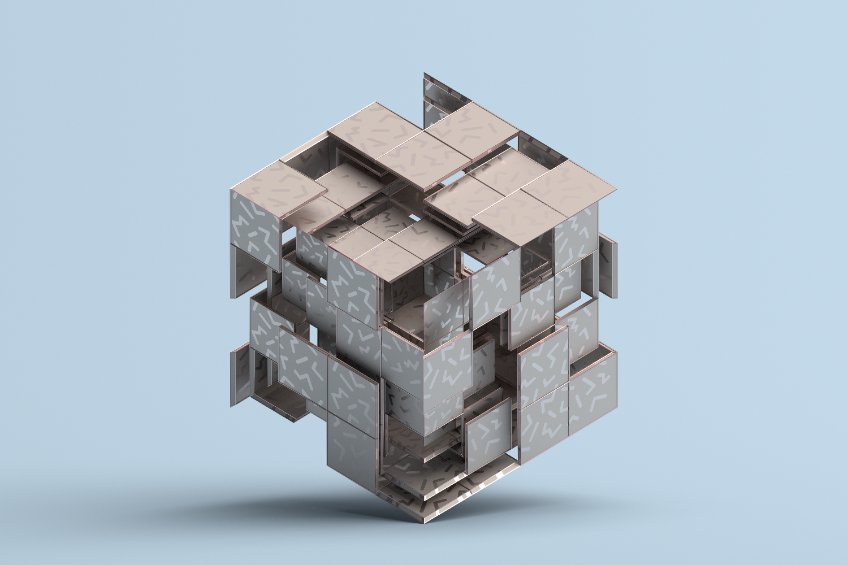by Concert VDC
The release of the 2022 AIA Digital Practice Documents opens a new door between design and construction. For some, this represents an unprecedented risk as mistakes inside the digital design data will now be exposed. That may feel like opening the door to Pandora’s box. This fear is more myth than reality. With the release of the 2022 AIA documents, we can shed light on the areas of concern and open the door to the reality of new opportunities they provide.
Unpacking the Myths
Let’s take a moment to provide some context.
- Myth #1 – BIM replaces the drawings and specifications. The Digital Practice Documents do not replace the common Instruments of Service with BIM. Instead, they allow you to specify when model portions or digital data will be used to describe specific components such as building structural elements, roof slopes, complex geometries, or custom manufactured components.
- Myth #2 – The model is the deliverable. The E-series and G-series documents are exhibits to the Owner/Architect and Owner/Contractor agreements and they give you the discretion to define what digital information will be delivered so that it can be a planned and scheduled activity. There is no requirement to deliver an entire model. The project participants can define specific systems or assemblies to deliver as data assets for analysis, fabrication, or even digital twin.
- Myth #3 – This is going to cost architects more and reduce fees. Fees for service are a negotiation between the two contracting parties. However, in the event that the full BIM is required because the Owner wants to utilize it for the purposes of a digital twin, the two parties should discuss a fee structure that supports this higher level of service.
The key concept of the Digital Practice Documents exhibits to understand is that they don’t replace or mandate traditional contract deliverables, they supplement them. It is also important to understand that they are established through a discussion among project participants and that they are exhibits to the core agreements. Concert supports the use of this digital information while creating a permanent record of what is shared.
But there are other perceived risks held by some firm leaders and those who counsel them. Let’s explore.
Other Perceived Risks and Risk Mitigation
IP Risk:
Most architecture firms hold a basic concern about design copyright and unauthorized use of their intellectual property. This fear emerged with the advent of CAD drafting systems like AutoCAD. With BIM, this issue is amplified because the model includes comprehensive 3D content and data aggregated into a single file. Despite copyright protection codified by law, architects still worry that attribution for their design work may too easily be stripped from the data and find the work proliferating without compensation.
Having an unassailable third-party record of your digital design data with authorship encoded protects against such actions. To protect your work, Concert provides such a rigorous platform to authenticate and protect your digital data today and forever.
Tamper Risk:
Another common fear is the concern that the receiving party will modify or tamper with the data in some way that the built work will not be compliant with the design intent. Worse, changes will be made by the receiving party and blamed on the sending party. Worst of all, the changes could violate the building code or create an unsafe condition.
What is required is a means to be able to trust the integrity of files and to have an ability to interrogate the digital information to compare it to a permanent record and validate authenticity. Without this capability, trust is never created. Concert’s permanent record and chain of custody is the answer to these concerns.
Risk of Unintended Use:
Within the language of Digital Practice Documents comes the requirement for all data to be authorized for use. In other words, the right-of-reliance of the data must be stipulated. For example, a series of data files would be authorized only for the fabrication of interior wall panels or a rainscreen assembly. The point of authorization is that it provides the ability to couple the intent of the design professional to shared data. Unfortunately, the Digital Practice Documents only record the right-of-reliance information in the BIM Execution Plan which is decoupled from the actual data.
Concert was developed for digital project delivery and to address all of the described fears and risks. With Concert, exchanged data is recorded to a blockchain-based smart contract that records the original state of the data, right-of-reliance statements, assignment of ownership, recipients, and much more. Data exchanged with Concert is trusted data and when coupled with the power of the 2022 AIA Digital Practice Documents shifts from being Pandora’s box to a cornucopia of opportunities and possibilities for design firms globally.
The Biggest Risk of All:
The biggest risk in Digital Project Delivery is the risk that the building owner and/or contractor determines the means, manner, and method of digital delivery for you. The new AIA contracts are publicly available and good ideas don’t take long to circulate. Our goal is to equip you with the tools and processes to succeed and thrive in this new environment.
Visit us at www.concertvdc.com and follow us on LinkedIn.





